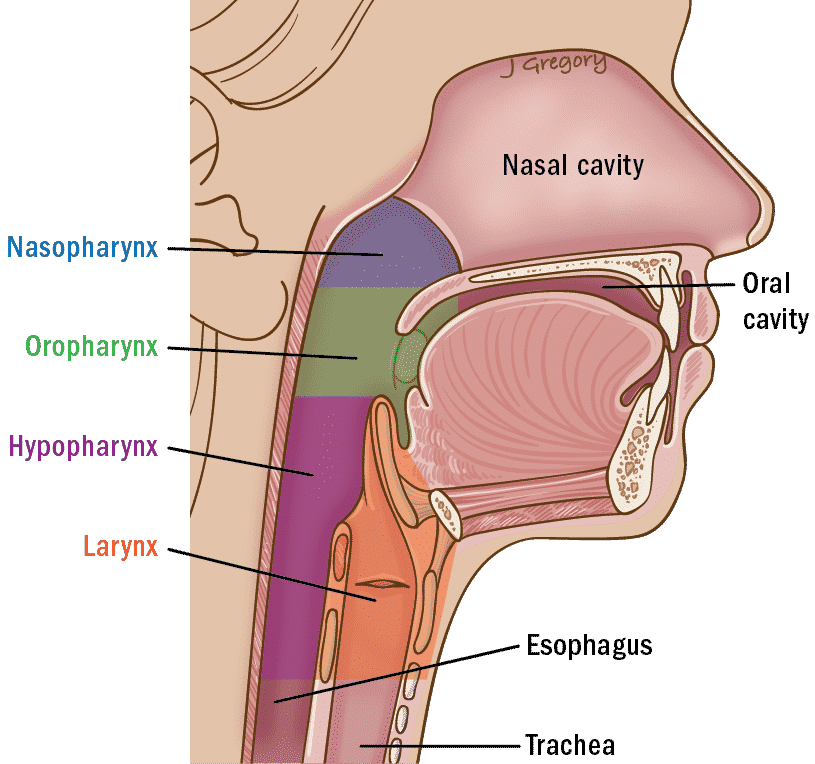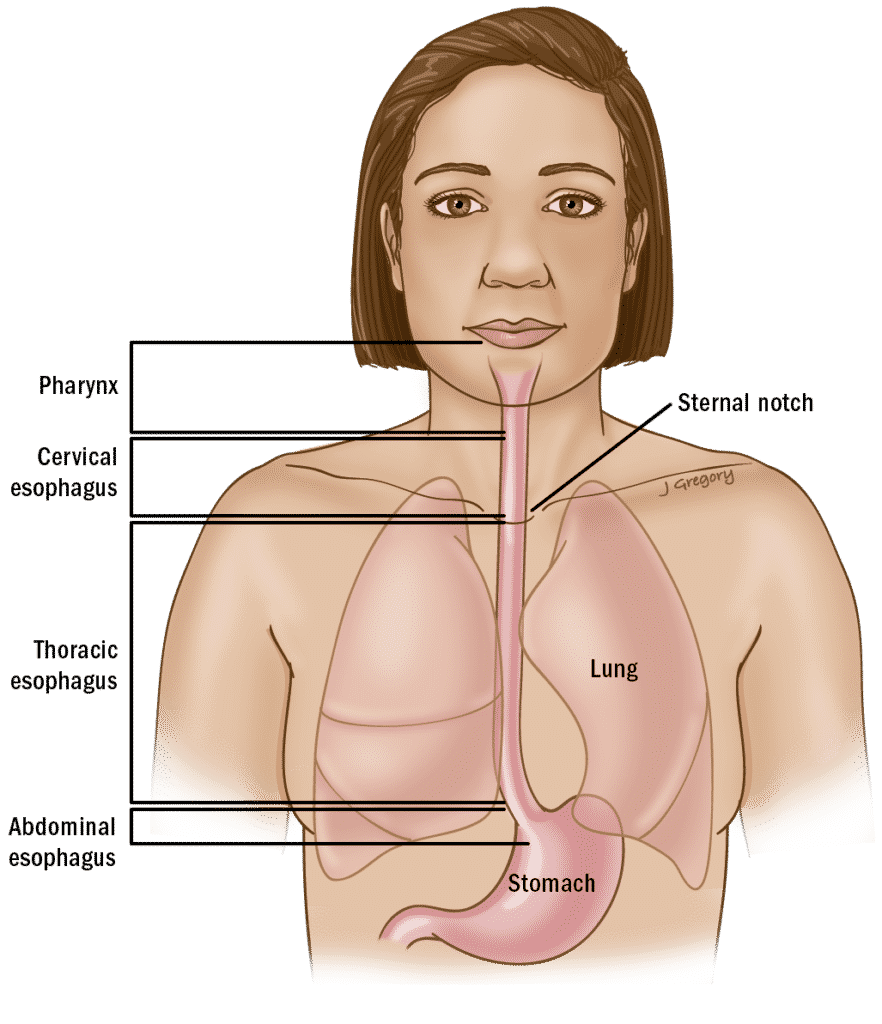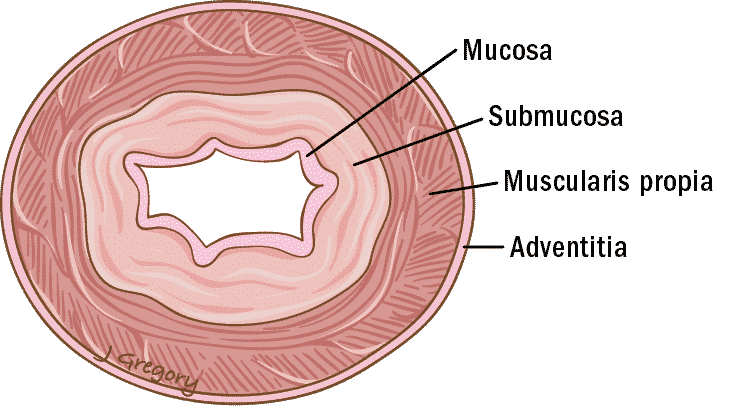
In order to understand cervical esophageal cancer, it helps to understand the anatomy of the region. The esophagus is a muscular tube lined by mucosa that carries food and liquids from the throat into the stomach. It runs through the central portion of the neck behind the trachea just in front of the spine. On each side of the esophagus are the carotid sheaths, which contain the carotid artery, jugular vein, and vagus nerve. Because the esophagus begins in the lower neck, cancers in this region are often considered to be throat cancers. Esophageal cancers are often classified by measuring the distance from the teeth to the top of the tumor.
The Esophagus

- Cervical esophagus: This is the uppermost part of the esophagus, and it extends from the hypopharynx to the sternal notch (the indentation in the middle of the neck between the two collarbones). It starts at 16 centimeters from the teeth, and ends where the esophagus enters the chest (approximately 20 centimeters from the teeth).
- Thoracic esophagus: This is the middle part of the esophagus, and it extends from the sternal notch down to where the stomach and esophagus join. It stretches approximately 20 to 40 centimeters from the teeth. It is divided into upper, middle and lower thoracic esophagus.
- Abdominal esophagus: This is the lowermost part of the esophagus, and it begins at the esophagus/stomach junction and extends five centimeters below. Cancers in the uppermost part of the stomach are fairly similar to esophageal cancers (in the type of cancer and the way they behave), so they are often grouped together.
Esophageal Tissues

The esophagus is made up of multiple layers of tissue. For esophageal cancers, it is important to know how deeply the cancer invades the esophagus, as this will determine the stage of the cancer. There are 4 layers of tissue that make up the esophagus:
- Mucosa: This is the inner lining of the esophagus. The mucosa itself has three layers:
- Epithelium: The epithelium is the innermost layer of the esophagus. The mucosa of the cervical esophagus is lined with squamous epithelium, so cancers in this layer will usually be squamous cell carcinomas. In the lower part of the esophagus, the squamous cells can be replaced with gland-like cells, which can lead to adenocarcinomas.
- Lamina propria: This is a thin line of tissue just deep to the epithelium. If cancerous cells invade past this layer, the cancer is staged as T1 or greater
- Muscularis mucosa: This is a very thin layer of involuntary muscle. It is the outermost layer of the esophageal mucosa
- Submucosa: This layer lies just outside of the mucosa (on the other side of the muscularis mucosa), and consists mainly of mucous glands that keep the esophagus lubricated so that food can pass down the tube easily. This layer also contains loose connective tissue, blood vessels, and nerves
- Muscularis propria (also called the external muscle layer): This is a thick layer of muscle (far thicker than the muscularis mucosa), that is responsible for the coordinated movements of the esophagus, which move food from the cervical esophagus down into the stomach.
- Adventitia: This is the outermost layer of the esophagus. If cancerous cells invade the adventitia, the cancer is staged as T3. If a cancer were to invade through this layer, it would be able to reach the structures outside of the esophagus
Regional Lymph Nodes
Another important consideration regarding the anatomy of the cervical esophageal region is the issue of regional lymph nodes. With most head and neck cancers, the relevant lymph nodes are located in the face or the neck. However, with esophageal cancers, the regional lymph nodes are located in the lower neck and the chest:
- Supraclavicular nodes: These lymph nodes are in the sides of the neck just above the collarbones in the supraclavicular fossa.
- Superior mediastinal / aortic / inferior mediastinal / pulmonary nodes: This region includes lymph nodes in the chest. These are best evaluated by imaging (likely an endoscopic ultrasound) done by thoracic and gastrointestinal specialists.












